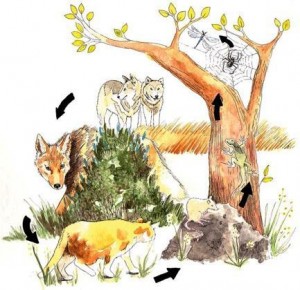
Announcing the release of Cougar Ecology and Conservation edited by Maurice Hornocker and Sharon Negri.
Internationally renowned biologist Maurice Hornocker and long time conservationist Sharon Negri have joined forces to produce Cougar Ecology and Conservation, a seminal go-to resource for scientists, wildlife managers, biologists, conservationists, and anyone who has an interest in large carnivores.
A rare anthology featuring twenty leading scientists from Canada to Patagonia, Cougar Ecology and Conservation is the first comprehensive book that spans the cougars entire range and includes a of topics surrounding this complex animal.
The book’s contributors cover a wide range of experience, perspectives and topics. Some of the subjects covered include taxonomy, genetics, history, cougar behavior and social organization, predator-prey relationships, population dynamics, management, human dimensions, the role of government and citizens in conservation, conservation planning, and the future of research.
Cougar Ecology and Conservation contains 304 pages, including 36 color photographs, 70 halftones, 19 line drawings, and 25 tables.
To order the book link to: University of Chicago Press

 It seems like more and more we are hearing about and dealing with human-wildlife conflicts which in many cases are more about conflicts between humans than about wildlife. As part of my job with the Grizzly Bear Outreach Project (GBOP) and my job as a zoo keeper this topic comes up a lot. Dealing with this topic can be touchy so I was very excited to hear about a course that teaches about conflict dynamics and how to address them.
It seems like more and more we are hearing about and dealing with human-wildlife conflicts which in many cases are more about conflicts between humans than about wildlife. As part of my job with the Grizzly Bear Outreach Project (GBOP) and my job as a zoo keeper this topic comes up a lot. Dealing with this topic can be touchy so I was very excited to hear about a course that teaches about conflict dynamics and how to address them. ”The objective of this course is to improve the ability of conservation practitioners to understand conflict dynamics and establish more effective ways to address them. Participants will accomplish this by drawing on tools, processes, and theory developed in the field of conflict resolution that have shown to be applicable to conservation realities. As a result, conservation practitioners will possess a broader set of skills to ensure that conservation solutions are more successful and sustainable.”
”The objective of this course is to improve the ability of conservation practitioners to understand conflict dynamics and establish more effective ways to address them. Participants will accomplish this by drawing on tools, processes, and theory developed in the field of conflict resolution that have shown to be applicable to conservation realities. As a result, conservation practitioners will possess a broader set of skills to ensure that conservation solutions are more successful and sustainable.”  I would recommend this course to anyone that has to deal with human-wildlife conflict; it really does provide tools and guidance to prevent or resolve conflict issues. As someone who has never been good at dealing with human conflict, I left the course feeling like I can go out accomplish my goals and when conflicts arise I can handle them.
I would recommend this course to anyone that has to deal with human-wildlife conflict; it really does provide tools and guidance to prevent or resolve conflict issues. As someone who has never been good at dealing with human conflict, I left the course feeling like I can go out accomplish my goals and when conflicts arise I can handle them.








